Exploring Einstein’s Relativity with Everyday Physics
Written on

When you extend your hand skyward, numerous particles are colliding with it. You can correctly assume that ions, electrons, and molecules from the atmosphere are present. Additionally, photons, or light particles, must also be impacting your skin.
However, there is another particle interacting with your hand, made possible by the principles of relativity. Each second, about one muon—a heavier, unstable relative of the electron—passes through your palm. These muons are generated in the upper atmosphere through interactions with cosmic rays. Despite having a mean lifetime of just 2.2 microseconds, relativity allows these muons to reach your hand from over 100 kilometers above. Here’s how this fascinating phenomenon unfolds.
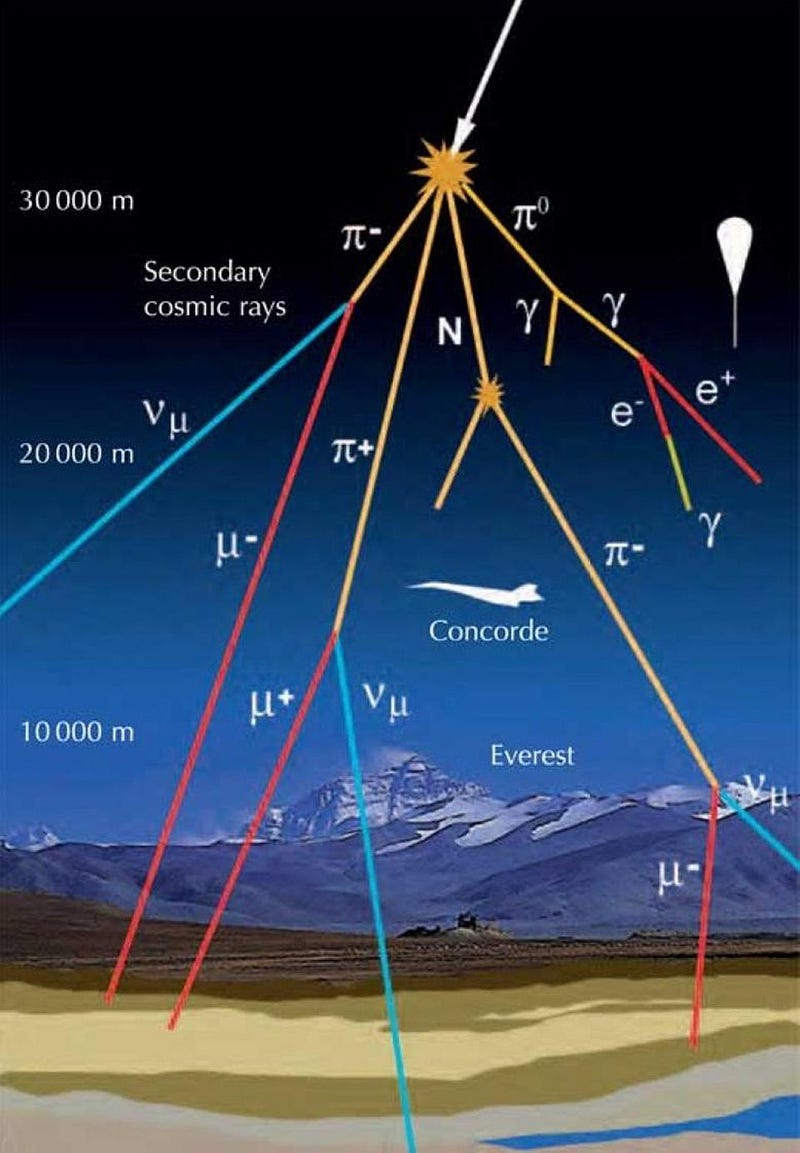
Subatomic particles are typically invisible to the naked eye due to their extremely small scale. Yet, if you create a vapor composed entirely of alcohol, a charged particle traversing it will leave a visible trail, detectable even with basic observational tools.
As a charged particle moves through this alcohol vapor, it ionizes the vapor's molecules, creating condensation nuclei for alcohol droplets. The resulting trail is sufficiently long-lasting for human vision, and its curvature can reveal the particle type if a magnetic field is applied.
This concept was first utilized in particle physics through the cloud chamber.

A cloud chamber can be constructed in just one day with inexpensive, readily available materials, costing less than $100. (You can find a guide for this process.) By placing a smoke detector's mantle inside the chamber, you will observe particles radiating in all directions, leaving trails within the chamber.
This occurs because the mantle contains radioactive materials like Americium, which decays and emits alpha particles. These alpha particles consist of two protons and two neutrons, similar to a helium nucleus. Their low-energy decay results in slower, curved tracks, and sometimes, they can be seen bouncing off the chamber's base—a straightforward test for verifying your chamber's functionality.

However, if you set up your cloud chamber without any particle source, you’ll still witness tracks—mostly vertical and perfectly straight. These tracks are caused by cosmic rays, high-energy particles that collide with Earth’s atmosphere and generate cascading showers of secondary particles. While protons dominate cosmic rays, they travel at various speeds and energies. Higher-energy particles collide with atmospheric particles, producing protons, electrons, and photons, as well as short-lived particles like pions.
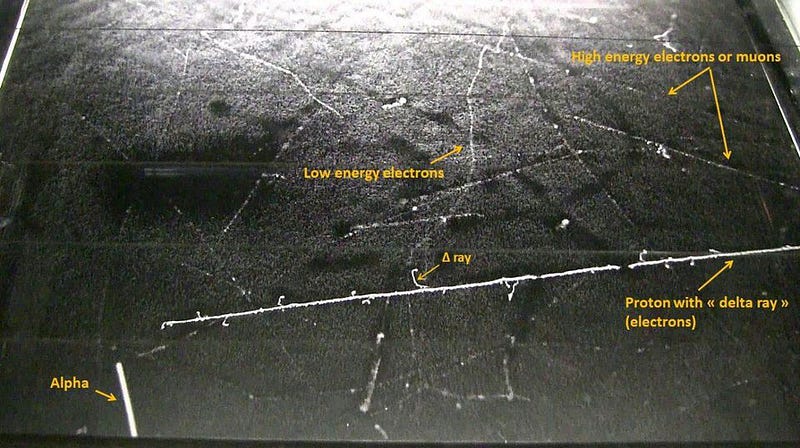
Pions exist in three forms: positively charged, neutral, and negatively charged. A neutral pion decays into two photons in a very short time, while charged pions last longer (about 10^-8 seconds) and mainly decay into muons—point particles with a mass 206 times greater than that of electrons.
Although muons are also unstable, they are the most stable among fundamental unstable particles, averaging a lifetime of 2.2 microseconds. You might think that multiplying this lifetime by the speed of light (300,000 km/s) would yield a distance of 660 meters. However, this leads to a puzzling question.
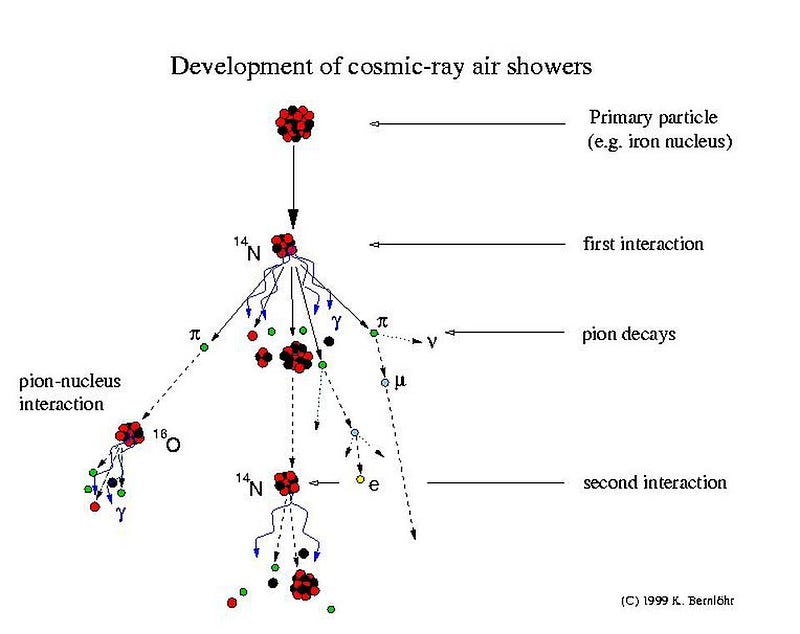
Remember, I mentioned that when you hold your palm out, approximately one muon per second passes through it. Yet, if they only exist for 2.2 microseconds and are generated in the upper atmosphere, how can these muons make it to Earth?
You might speculate that some cosmic rays have enough energy to continue producing particle showers during their descent, but this doesn’t align with measured muon energies. The lowest-energy muons still originate around 30 kilometers up. You might also think that 2.2 microseconds is just an average, suggesting that some rare muons survive for 3 or 4 times longer. However, calculations indicate only 1 in 10^50 muons would reach the surface; in reality, nearly all created muons arrive.

How can we understand this apparent contradiction? While muons travel close to light speed, we observe them from a stationary frame. We can measure the distance they cover and their lifetime, and even assuming they move at light speed, they shouldn't make it even 1 kilometer before decaying.
This overlooks a crucial aspect of relativity! Unstable particles do not experience time as an external observer does. Their onboard clocks run slower the closer they approach light speed, leading to time dilation. This means we observe muons existing longer than 2.2 microseconds from our perspective. The faster they travel, the further they appear to go.
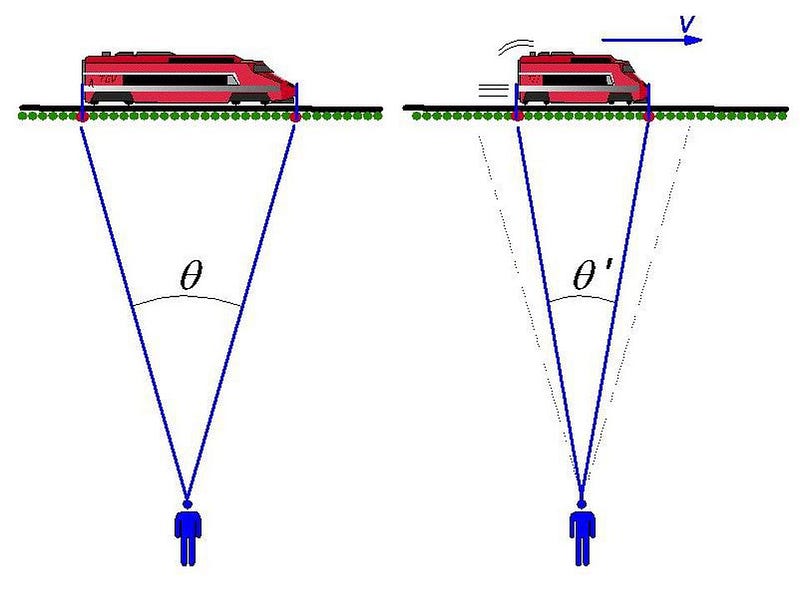
What does this mean for the muon? From its perspective, time passes normally, so it experiences its lifetime as 2.2 microseconds. However, because it travels toward Earth at nearly the speed of light, distances in its path contract.
For a muon moving at 99.999% the speed of light, every 660 meters in our frame appears as only 3 meters to it. Thus, a 100 km journey to the surface would seem only 450 meters long to the muon, taking just 1.5 microseconds of its time.
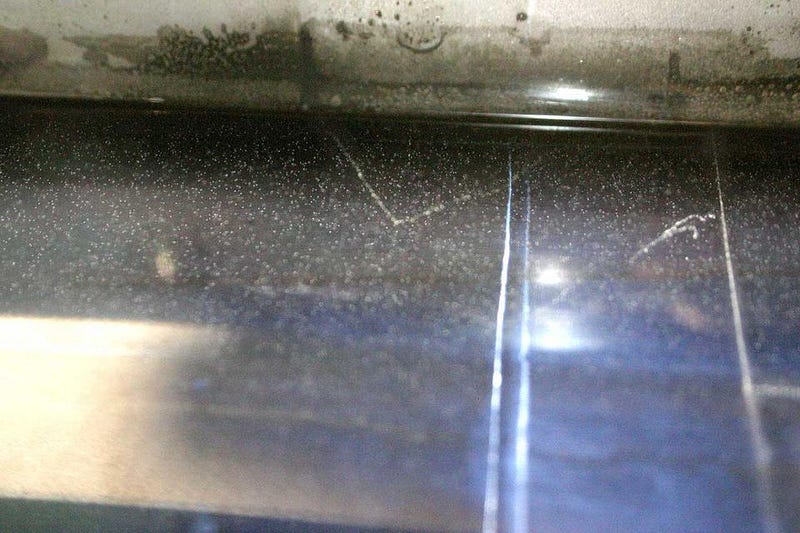
For us on Earth, we observe the muon covering 100 km in approximately 4.5 milliseconds. This aligns perfectly with the muon's experience: time dilation for it and length contraction allow it to survive the journey to Earth.
Without relativity, this phenomenon cannot be explained! At high velocities, which correspond to significant particle energies, the effects of time dilation and length contraction enable the majority of muons to survive their descent. Hence, even down here at the Earth's surface, one muon per second continues to traverse your open hand.
If you build a cloud chamber, you can witness these muons for yourself. With a magnetic field, their tracks will curve according to their charge-to-mass ratio, confirming they are not electrons. Occasionally, you might even observe a muon decaying mid-air. If you measure their energies, you'll find they are traveling at ultra-relativistic speeds. Without relativity, these muons would be invisible.
Time dilation and length contraction are real phenomena, and the survival of muons from cosmic ray showers to Earth serves as undeniable evidence of this truth.
Starts With A Bang is now on Forbes, and republished on Medium thanks to our Patreon supporters. Ethan has authored two books, Beyond The Galaxy, and Treknology: The Science of Star Trek from Tricorders to Warp Drive.